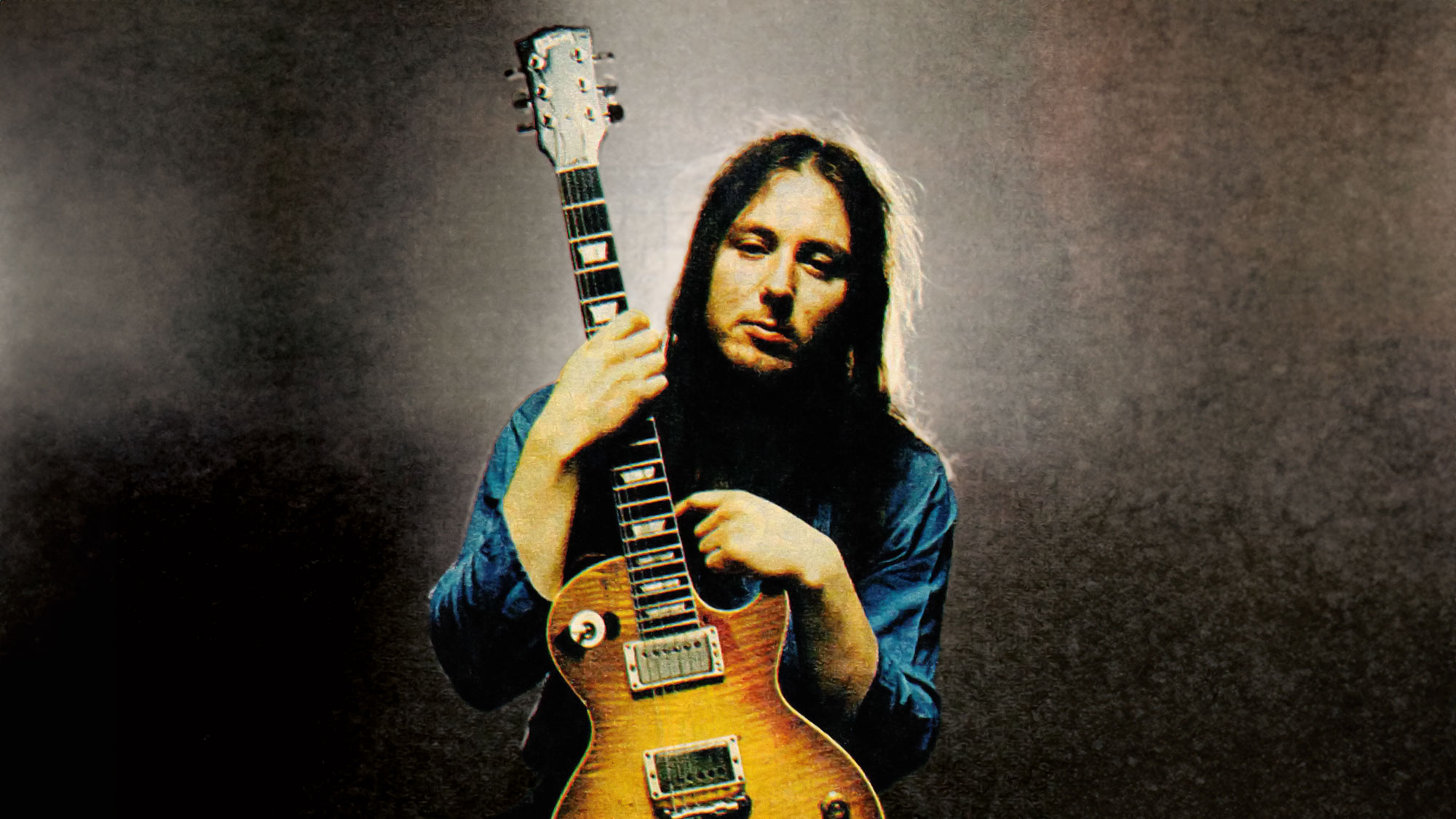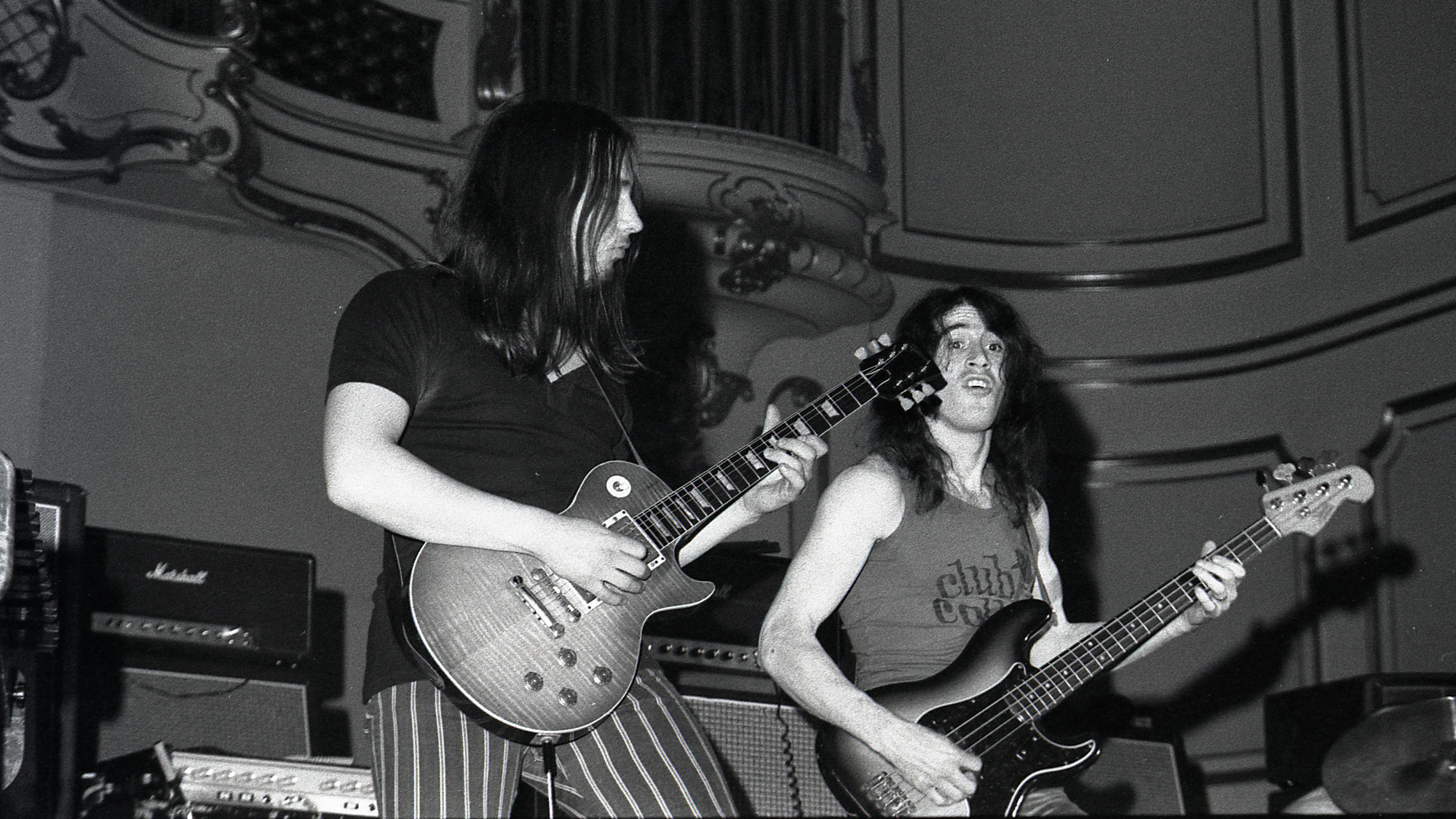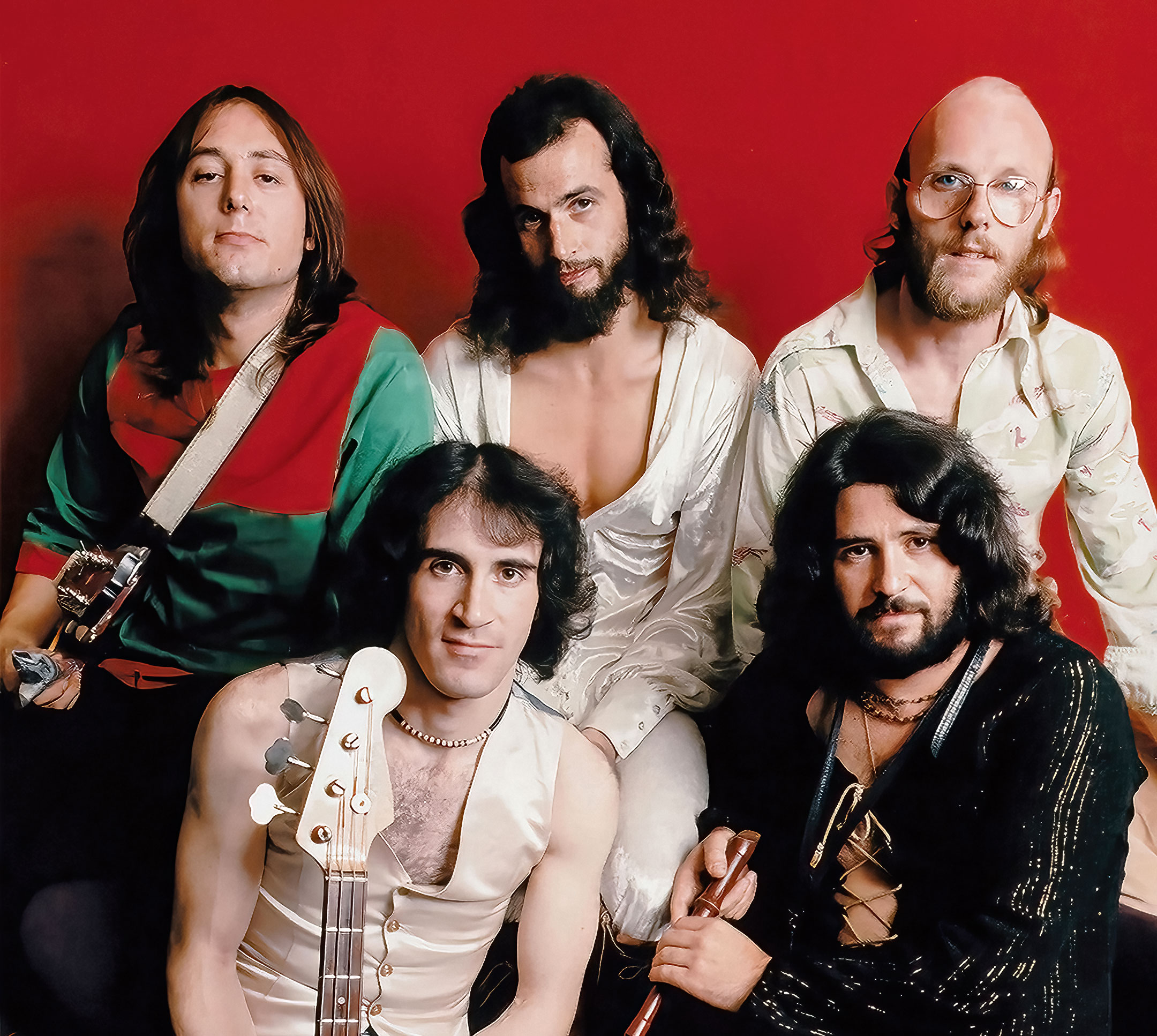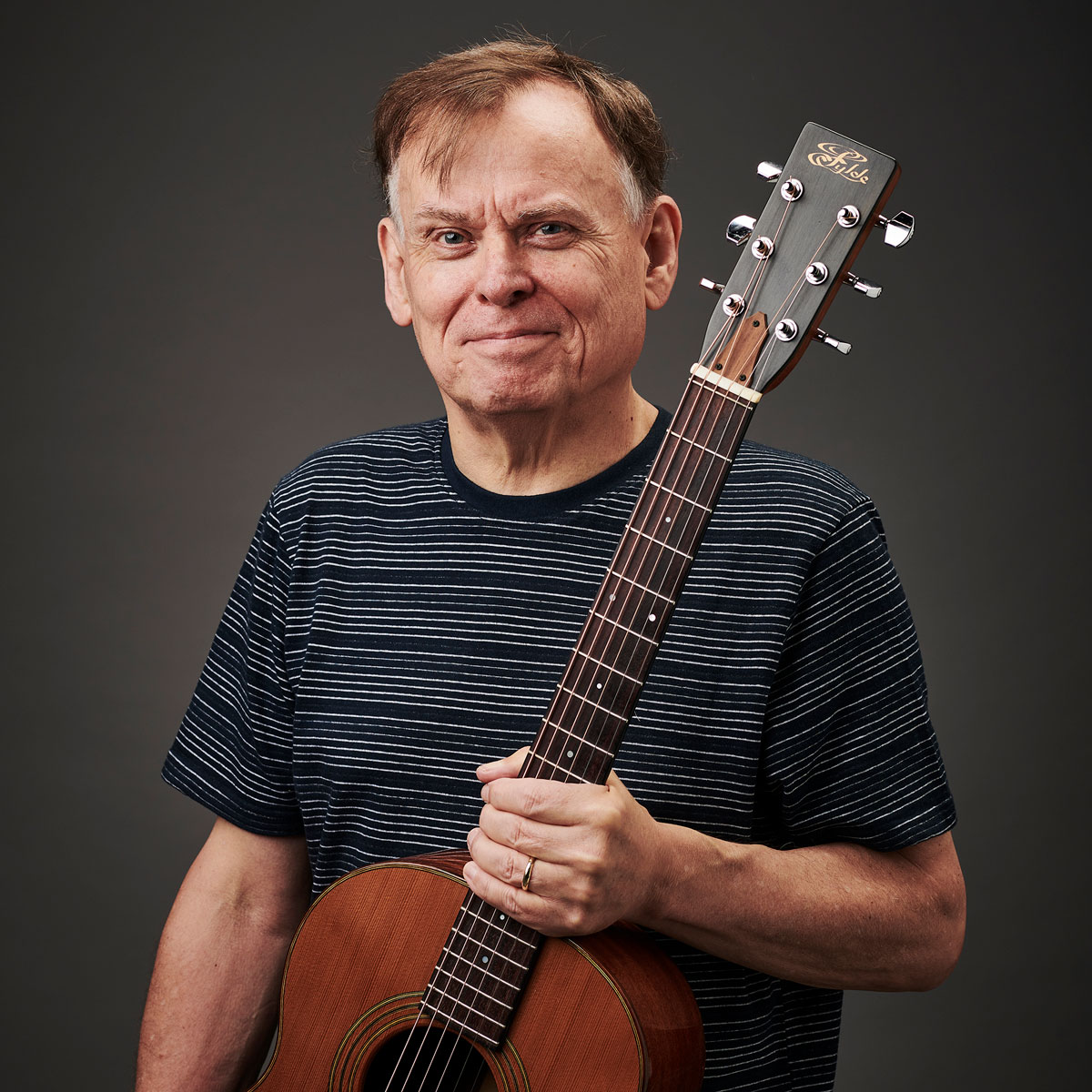“The music was very dependent on accurate timing… If it was a big stage and we were spread out, it was just murder for us”: They were a pivotal band in prog’s golden age and split in 1980, but Gentle Giant still have a rabid fanbase
With Gentle Giant’s legendary Playing The Fool receiving a remix, the band’s Gary Green reminisces about the challenges of gear and gigging in the ’70s

To say that Gentle Giant are a cult phenomenon would be an understatement. Despite the band splitting in 1980, the fanbase is still active and ever hungry for recent studio album remixes, courtesy of Steven Wilson.
Playing The Fool, the band’s 1977 live album, has now received similar treatment in the hands of Dan Bournemark and, for an album that is 48 years old, the result is nothing less than remarkable, with modern technology offering the listener the virtual experience of being present in the audience.
Recorded during the band’s 1976 European tour, the full setlist has been restored for the first time, too. Guitarist Gary Green joins us for a trip down Giant’s memory lane.
What was the idea behind the complete remix of Playing The Fool?
“The idea was to try to give the listener the experience of being at the gig, you know? Run the whole show with all the bits and bobs in between and make it feel like you’re sitting in the audience. I think that’s been successful to some degree; it feels like you’re immersed in it, which is always a great thing to hear on a live album.”
Can you paint a picture of what it was like touring with Gentle Giant in the mid-’70s?
“Looking back, we were devoid of great equipment for monitoring purposes and such like. But, of course, back in the day, you thought it was all new technology, so you just got on with it. It was a fantastic time.
All the latest guitar news, interviews, lessons, reviews, deals and more, direct to your inbox!
“We always felt we were pretty solid as a live band, and when we made Playing The Fool, it was after Interview [1976], on which, for some odd reasons, I think we felt we hadn’t quite nailed it. You know, it seemed like we had done it a bit in a rush, and it wasn’t quite up to our own internal standard, if you like.
“So we were kind of treading water a little bit. We thought, ‘Let’s do a live album…’ because it’d be great to capture the band in the mode that we were in, which was a strong live act.”

The playing on the live album is very complex. How did you get around the poor monitoring situation if you could hardly hear each other?
“The music was very dependent on accurate timing and so we always tried to set up very early on. We tried to establish that we could always be in the same relative positions to each other.
“If it was a big stage and we were spread out, it was just murder for us. Kerry [Minnear, keyboards] was, like, 40ft away and I’m supposed to be playing something intricate with him. It was ludicrous, you know?
It was a great instrument to play, but towards the end I began to realise that it could be worth a lot of money
“So we opted for a stage plot that kept us within scratching distance. We’d have very close eye contact all the time – me and John [Weathers, drums], me and Kerry – especially me and Kerry, because we were so far apart. ‘Is this where we are?’ Nod, ‘Yeah, right.’ It was tricky. Nowadays, you can be spread apart because you’ve got in-ears, everybody’s locked in and it’s a lot easier.”
Looking at the gear you used back then, you had a beautiful Les Paul. How did that come about?
“I don’t really know. We might have just completed a record deal, got an advance and thought, ‘Okay, we better up our game a bit. We need to get some decent gear.’
“So we were up in London gear shopping. We were in Kingston-upon-Thames of all places. We went into a music store and wandered all around the shop looking at great stuff. I saw this guitar on the wall and thought, ‘I’ve gotta try that.’
“I loved it and, thanks to the management who put down the deposit and contracted for the hire purchase agreement, we bought the guitar. It was £360. It was a great instrument to play, but towards the end I began to realise that it could be worth a lot of money, and then you start to become very protective of it and make sure that you’re going to keep it in sight and all that. I sold it in 1993. So while it’s gone, I don’t really regret it.”

And your other stage guitar was a ’70s Telecaster, wasn’t it?
“It was a ’72; I bought it new. Again, it was some music store off the A3 on the way up to London. I can’t remember the name of it, but they had a stack of Telecasters and I played 15 or so of them and settled on that one.
“I didn’t know what I was doing, really. It’s not a fabulous guitar, but we needed a different sound from my Les Paul. Ray [Shulman, bass and violin] had a nice old Strat, which was a ’60-something-or-other and sounded lovely. But, I mean, we didn’t have a billion guitars, maybe five or six.”
You also used a 12-string acoustic on stage, didn’t you?
“It was kind of a hangover from their time as Simon Dupree And The Big Sound [the 1960s band from which Gentle Giant evolved]. It was the Hagstrom, I guess. It’s a Hagstrom on the first album [Gentle Giant], on Funny Ways; early stage versions of that was that Hagstrom, and that was a really nice guitar.
“It got stolen at a gig in Chatham, unfortunately, and then we replaced it with a… you know what? I don’t know what brand it was! We had a Fender 12-string acoustic, for a while, which was not very nice-sounding.”

Acoustic guitars were a nightmare to amplify on stage in the ’70s. How did you manage to get around the problems?
“I just saw a picture of one of my first gigs. I’ve got my Hagstrom 12-string with a ’70s curly lead straight into an amp, all stretched out – could have pulled out any second. It had a pickup on it, like a DeArmond or something.
“But we ended up using microphones for the acoustic guitars on stage, which is problematic if you’re going to use them within the whole band – like in the Octopus medley where there’s loud stuff behind the acoustic guitar.
“Other than that, it was acoustic guitars without noise [from the rest of the band]. So not too bad, but it was still difficult trying to amplify them loud enough in a decent-sized place. That was a constant battle. But that’s the fun of the ’70s, you know?”
Which amplifiers were you using back then?
“Early on we had Laney amps, again a holdover from Simon Dupree. We had a whole backline of Laney 100-watt heads and two 4x12s each. I think Kerry had four 4x12s. It was a sort of Spinal Tap array of cabinets! After looking around at a bunch of different gear I opted for an HH solid-state amp and I used that for a lot of live gigs.
“I don’t remember what amplifier I had for the live album. I think it probably was the HH, and coupled with that, I had a rear-facing folded horn: 15-inch, probably an EV speaker, I think. And that’s what I used mostly. Up on 11 pretty much.”

What about effects?
“Very early on all I had was a volume pedal and a wah-wah on the floor, I think. Then the very next pedal I got was an MXR phaser – I think I’d use that on Just The Same in the middle, that sort of lyrical instrumental line.
“Then I had an [Electro-Harmonix] Electric Mistress flanger, which was very nice, and an MXR Micro [Amp] boost, just a little signal boost for solos and passages you wanted to come out a little more. But it wasn’t any more sophisticated than that.”
Are you happy with the new version of Playing The Fool?
“I am. This one has really opened up the stereo panorama. And it truly feels immersive to me, which was the point of it: it puts you there at the gig.
“I like that effect of it a lot, plus we’ve got a couple of extra tunes in there that weren’t included on the original release, including Ray’s violin solo, which was always a signal for John and me: it was just about a two‑Heineken solo, generally!”
- Gentle Giant’s Playing The Fool: The Complete Live Experience is out now via Chrysalis/Alucard.
- This article first appeared in Guitarist. Subscribe and save.
With over 30 years’ experience writing for guitar magazines, including at one time occupying the role of editor for Guitarist and Guitar Techniques, David is also the best-selling author of a number of guitar books for Sanctuary Publishing, Music Sales, Mel Bay and Hal Leonard. As a player he has performed with blues sax legend Dick Heckstall-Smith, played rock ’n’ roll in Marty Wilde’s band, duetted with Martin Taylor and taken part in charity gigs backing Gary Moore, Bernie Marsden and Robbie McIntosh, among others. An avid composer of acoustic guitar instrumentals, he has released two acclaimed albums, Nocturnal and Arboretum.
You must confirm your public display name before commenting
Please logout and then login again, you will then be prompted to enter your display name.

